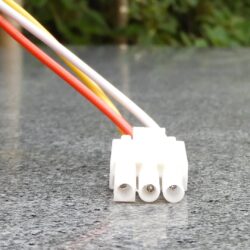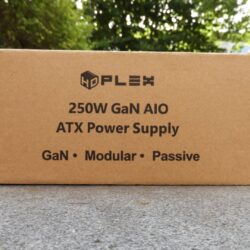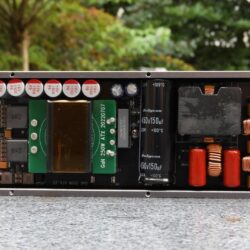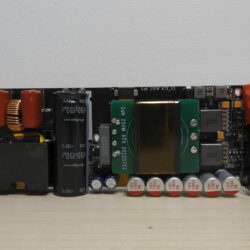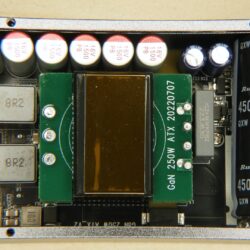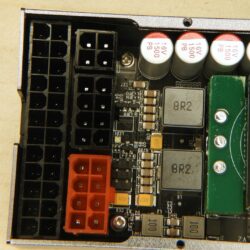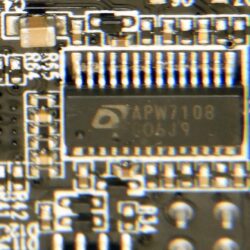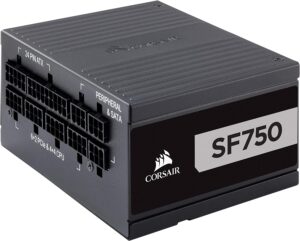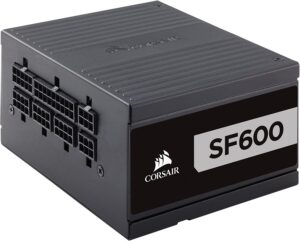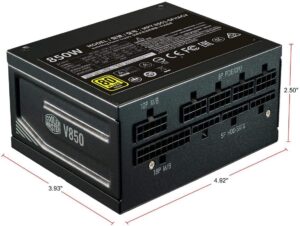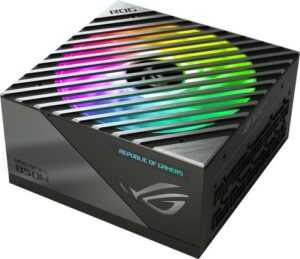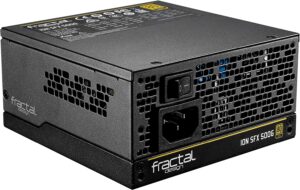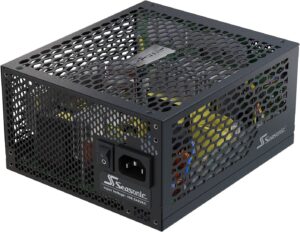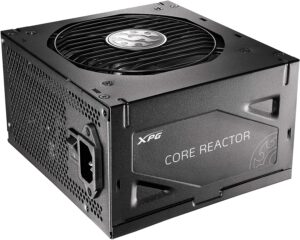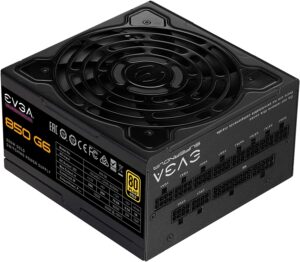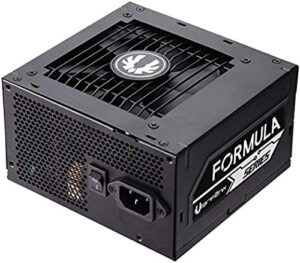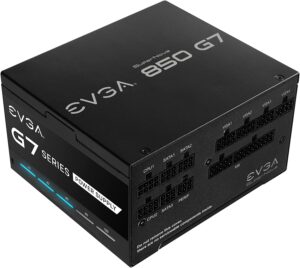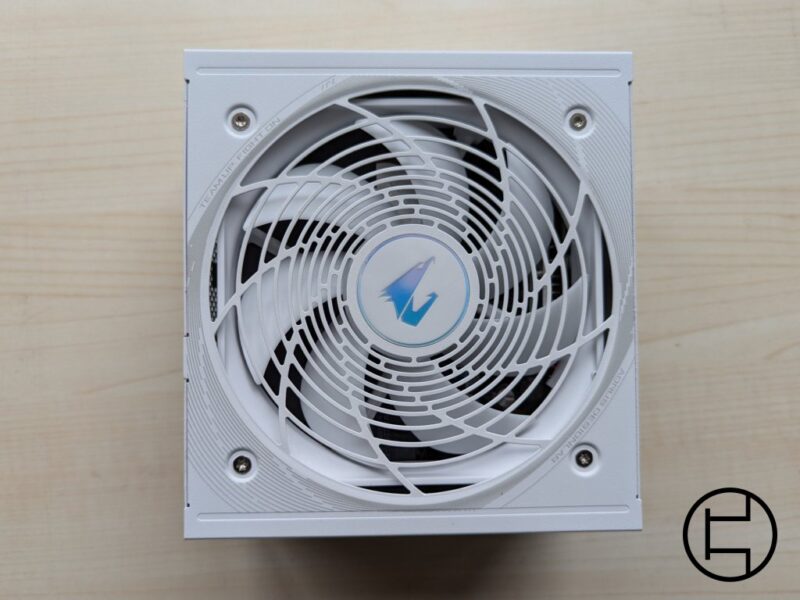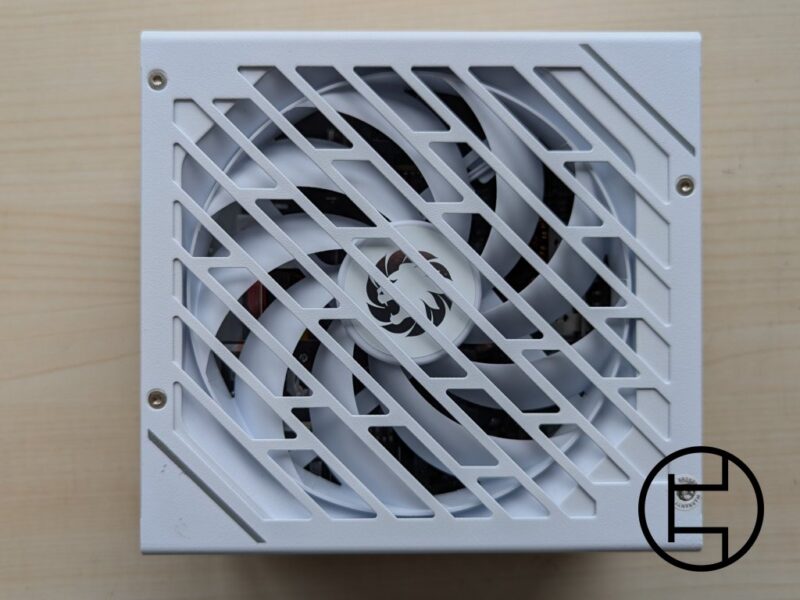Introduction
“Luke, you better not destroy this or you owe me 145 usd” is how this review idea started. Originally bought by our editor Leo. He decided to send it past me to check it out.
For further notice, when referring to ATX, I don’t mean the PSU size standardized by Intel, rather the connectors and other parts of the spec.
With that all said, what I have in front of me here is an incredibly high power density, fully passive PSU utilizing Gallium Nitride (GaN) to break the 1W/CM³ density many ATX size PSUs have struggled with. You’re also able to essentially daisy-chain units together, allowing even higher-power systems to be powered off these.
General Specifications
| Brand | HDPlex |
| Model | GaN Passive |
| Wattage | 250w |
| Introduction year | 2022 |
| Modularity | Fully |
| Warranty | 1 year |
Power Specifications
| 3.3V | 5V | 12V | 5VSB | -12V |
| 10a | 10a | 20a | 3a | 1a |
| 80w | 240w | 15w | 12w |
Cables
| Cable type | Cable Quantity | Connector Per Cable |
|---|---|---|
| ATX 24 pin | 1 | 1 |
| ATX 24 pin extension | 1 | 1 |
| EPS12v 8 pin | 1 | 1 |
| PCIe 8 pin | 1 | 2 |
| SATA | 1 | 4 |
While at face value this might seem little, but it’s a 250w unit. Some of the connectors on this PSU can handle more on their own than the HDPlex 250w GaN itself can provide.
While I’m normally not a fan of daisy chain PCIe connectors, in this case I can see the choice due to the higher footprint of adding another PSU side connector and the unit not providing sufficient power to overwhelm the cables or terminals either way.
External
Oh boy this thing is tiny… it’s like a laptop power brick.
The HDPlex 250w GaN is using the housing for heat dissipation. You’d normally expect it to either be very open or with a finstack to dissipate heat. However, seemingly it’s sufficient to use the housing fully closed and with a few grooves in the bottom part.
What we can see from here are a few connectors. They marked the PCIe connector red to indicate a difference from the EPS connector, showing they’re not interchangeable.
We can also see a 3-pin plug that will be used to wire up to a plug, optionally a second unit as well if applicable. It also has a 6-pin header above the connector to daisy chain multiple units to let them start together.
Protections
| OPP | Unknown IC |
| OCP | MP6924 |
| OTP | Unknown |
| UVP | PS113A, APW7108, MP6924 |
| OVP | PS113A, APW7108, MP6924 |
| SCP | PS113A |
| MOV | Yes |
Here I actually do have my questions… I easily found the over- and undervoltage protection in the DC-DC controller, LLC controller and a dedicated protection IC, as well as SCP in said protection IC.
However, OPP, OCP and OTP is where it gets confusing. While the DC-DC controller should have protection on the minor rails, I had to actually email HDPlex about how this was integrated. After some talks, they pointed out a few LVK25R003FER (commonly labeled as “R030”) SMD resistors. However, they noted little about the way this is supervised, so I ended up grabbing a multimeter and testing continuity.
After a while, I found out the following:
Third pin on the right of the smaller IC for PFC OPP
Third pin on the left of the bigger IC for LLC OCP
Fifth pin on the right of the bigger IC for LLC OPP
However, the ICs I’m referring to here have been made unreadable, making me unable to identify them. While I did ask HDPlex, they weren’t willing to disclose it.
OTP is a story of its own, HDPlex only notes it as being integrated. While this is not a major concern with how high the operating temperature is on this unit, it’s still something that should be expected of a 140 USD PSU. I’ve been unable to find how it’s integrated, both in regard to which IC and where possible thermistors are located.
Parts Breakdown+Internal
| OEM | HDPlex |
| Input Voltage | 90-264v |
| Primary Converter | APFC Half Bridge LLC |
| Rectifier | Synchronous Rectification |
| Regulator | DC-DC |
| PCB Type | Double Sided |
| Bulk Capacitor(s) | Rubycon QXW (450V, 150uf, 105c) |
| PFC MOSFETs | GaNext G1N65R150PB-N |
| LLC MOSFETs | GaNext G1N65R240PB |
| APFC Boost Diode | OnSemi MUR1660CT |
| Resonant Controller | Unknown |
| PWM controller | Anpac APW7108 |
| Bridge Rectifier | 4x Microdiode Electronics TTR8MF |
| 12v MOSFETs | 4x Aon 6234 |
| DC-DC Converters | 2x NCE Power NCEP60T15G |
| DC-DC Controller | MPS MP6924 |
| Supervisor IC | Silicon Touch PS113A |
There are no signs of other OEMs being involved with this unit, with for example UL codes or alike visible on the PCB, so to me it’s practically a HDPlex design.
It’s using a traditional APFC half bridge LLC, which is acceptable, but won’t include it into the same list as AX1600i, which uses GaN to achieve even higher efficiency using a totem pole PFC.
The bulk capacitor is surprisingly high rated, it’s very uncommon to see these beyond 400v, especially with current shortages. The PFC and LLC MOSFETs are where the GaN part of the product comes in, they are automotive grade FETs with a much higher power density compared to silicon.
The supervisor IC is disappointing considering the pricetag, seemingly only handling UVP and OVP. However, it’s possible one of the hidden ICs mentioned earlier is also either a protection IC itself or at least has shown to have the featureset to act like one.
I was unable to find a resonant controller, this is likely one of the unreadable ICs.
Conclusion
Overall, I like it. The power density is amazing, the use of GaN makes it even more awesome. However, only a year of warranty is way too short for a unit like this. I’ve talked with HDplex about this and they told us that they want to upgrade this to a 10-year warranty once it reaches a 50k monthly volume. Once this is achieved, I’m personally willing to recommend the unit fully.
As alternatives, I chose to list a number of SFX, SFX-L, passive and compact ATX units, as I have no exact alternative to the HDplex.
HDPlex 250W GaN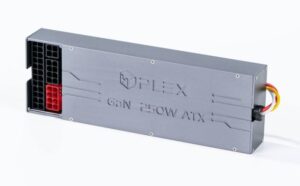
Buy HDPlex 250w
- Incredible power density
- Fully passive
- High-quality parts
- Great build quality
- Multiple units daisy-chained together allow for higher power systems to be powered off the HDPlex
- Expensive
- 1-year warranty (for now)
Alternatives
- Best SFX unit on the market right now
- Individually sleeved cables
- Quiet given its size
- Expensive
- Bigger compared to HDPlex 250w GaN
- Quiet given its size
- Great electrical performance
- Louder than platinum version
- Bigger compared to HDplex 250w GaN
- Cheaper than Corsair SF
- Scales up to 850w
- Solid electrical performance
- Loud
- Early batches had a poor semi-passive fan curve
- Bigger compared to HDPlex 250w GaN
- Cheaper than Corsair SF
- Scales up to 850w
- Solid electrical performance
- Loud
- Bigger compared to HDPlex 250w GaN
- Best SFX-L unit on the market right now
- Quiet
- Bigger compared to HDPlex 250w GaN
- Not yet widely available
- Limited warranty on the RGB part of the PSU
- Expensive
Silverstone SX1000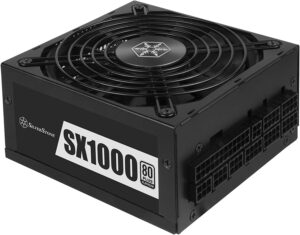
Buy SX1000
- Great build quality and electrical performance
- Bigger compared to HDPlex 250w GaN
- OTP is set rather high
- Not the most quiet
- Good electrical performance
- Nicer cables compared to stock Focus SGX
- Quiet
- Bigger compared to HDPlex 250w GaN
- Only scales up to 650w
Silverstone Nightjar NJ700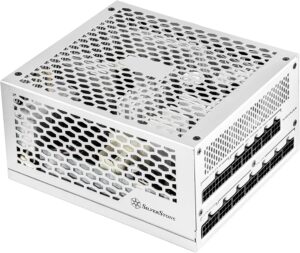
Buy NJ700
- Better electrical performance than stock Prime passive
- Fully passive
- Bigger compared to HDPlex 250w GaN
- Still has some electrical noise
- Expensive
Silverstone Nightjar SFX-L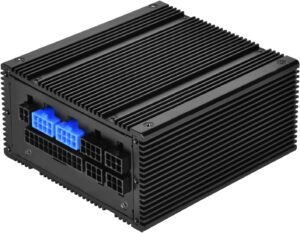
Buy NJ450
- Only passive SFX PSU on the market
- Good electrical performance
- Bigger compared to HDPlex 250w GaN
- Still has some electrical noise
- Expensive
- Widely available
- Fully passive
- Bigger compared to HDPlex 250w GaN
- Nightjar is better electrically
- Expensive
- Cheap
- Quiet
- Great electrical performance
- Bigger compared to HDPlex 250w GaN and SFX(-L) options
- Cheap
- Quiet
- Great electrical performance
- Bigger compared to HDPlex 250w GaN and SFX(-L) options
- Soon discontinued
- Cheap
- Quiet
- Great electrical performance
- Bigger compared to HDPlex 250w GaN and SFX(-L) options
- non-modular
- Cheap
- Great electrical performance
- Even more compact than the other ATX units at 130mm depth
- Bigger compared to HDPlex 250w GaN and SFX(-L) options
- Rather loud





